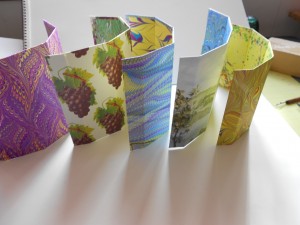Yesterday I was in a car accident. While driving down the hill near my house, I hit a patch of ice and ended up in the ditch. However that’s not what this blog is about. It’s just the starting point.
After the car came to a stop, I have an incredibly vivid memory of looking at the dashboard and seeing the lights on it. That made me realize the engine was still running, so I reached down and switched off the ignition. In my memory I was sitting up and the car was facing down the hill. The problem is, that’s not what happened. Yes, I did see the lights and I did turn off the ignition, but the car was upside down, lying on its roof, with the nose pointing up the hill.
I must have been upside down, held in place by my seat belt and there’s no way I could have seen either up or down the hill as the windshield was collapsed and smashed with the hood of the car lying on the ground.
Over the past 24 hours, I have tried many times to correct my memory by telling my brain what must have happened and the real position of my body. My memory doesn’t care! It stubbornly clings to the upright position. It fascinates me and raises a whole range of questions about memory under stress. I have always heard that eyewitness accounts can be unreliable. Now I really understand that.
My armchair opinion is that the brain is trying to make sense of something that is nonsense and totally unfamiliar. I always drive the car sitting up and I was going down the hill. Driving a car upside down doesn’t make sense and is a totally new pattern, so the brain improvises and force fits what it sees into what it “should” see.
For the sake of the narrative, I was able to unfasten my seat belt and turn myself around enough to find the door handle. Miracle of miracles, when I tried the door, it opened as easy as pie and the warning chime (keys in ignition) even went off. Many thanks to our laws on automotive safety. And yes, other than the expected bumps and bruises, I seem to be fine. The car, not so much!
Like this:
Like Loading...






























